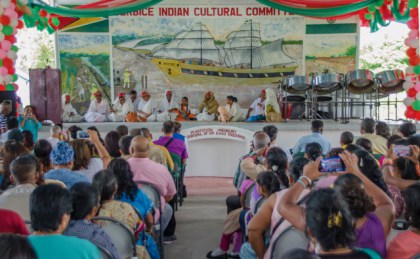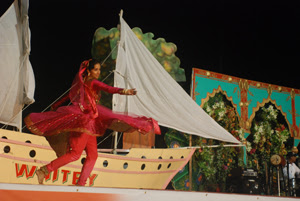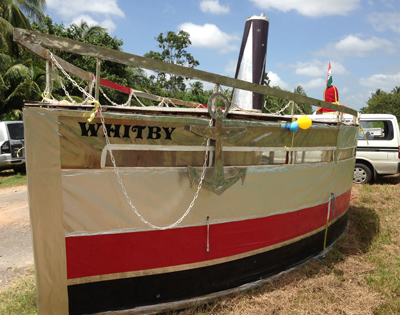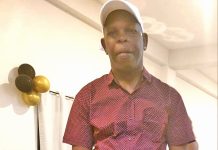 An Indentured Immigrant’s first Home
An Indentured Immigrant’s first Home
Two hundred and fifty labourers had sailed from Kolkata (then Calcutta) India on The Whitby to arrive in British Guiana on May 5, 1838. Four died along the 96-day journey. Highbury, their first point of entry, is a small village at the culmination of an annual trek by those commemorating the arrival of East Indians in Guyana.
According to some accounts, many of those who returned to India after their indentureship period at Highbury had ended, returned with substantial wealth; paving the way for the Indian indentureship era in Guyanese history, and, according to most scholars, saving the colony from ruin and abandonment.After the labour vacuum left by freed slaves began to have a disastrous effect on colonial industry, particularly the sugar industry, the owners of Plantation Highbury along with a few others including John Gladstone, from Liverpool, England, sent to India for workers to tend their investments.
Henry Davidson, Aeneas Barkly, whose only surviving son Henry Barkly would become the 4th governor of British Guiana (1849-1853), and D.C. Cameron, were the British owners of the plantation. Aeneas Barkly died during the apprenticeship period, and his son Henry took over his father’s affairs. One hundred and seventeen labourers, including 11 females, arrived at Plantation Highbury on the East bank of the Berbice River to begin their period of indenture on the colony. Their indentures were dated from Dec. 29, 1837.
 According to some accounts, by January 1839, a visit by a Justice Macleod to Plantation Highbury found that 15 males and two females had since died, and some 10-15 were on the “sick list”. The surviving labourers were described as “cheerful and contented”. By November 1839, mortality rates at the plantation included 17 males and one female, with 12 on the sick list. Others had run away several times, despite reports of the good treatment of coolies on the plantation.
According to some accounts, by January 1839, a visit by a Justice Macleod to Plantation Highbury found that 15 males and two females had since died, and some 10-15 were on the “sick list”. The surviving labourers were described as “cheerful and contented”. By November 1839, mortality rates at the plantation included 17 males and one female, with 12 on the sick list. Others had run away several times, despite reports of the good treatment of coolies on the plantation.
Official colony records stated that 22 persons from the original first batch had died on Plantation Highbury, either from drowning, excessive drinking, dysentery or gangrene, to name a few, while two had run away. Colony records also note that the Highbury Pln labourers reared the most livestock than anywhere else on the colony; both for their own food and to sell.
In January 1843, Davidson wrote to Lord Stanley that “the first-class ship “Louisa Baille”” was returning to India with a batch of former indentured workers from Highbury estate. This was after a flurry of letters from colony governor Henry Light to Lord Stanley in England, conveying the increasing uneasiness of the workers who were still in the colony awaiting their journey back home after serving out their contracts.
Colony records estimate that 81 Highbury labourers returned to India on the “Louisa Baille”, while nine chose to remain on the colony. There were also eight women, seven boys and two girls on the return trip, of which all but two children were born on the colony.

Between the 81 labourers, the group was returning with some $8,536, while four of the nine remaining had no savings at the time.
But Plantation Highbury was not the original name of the estate, nor were its British owners its original landlords. The estate initially belonged to the Berbice Association, a Dutch association formed in 1720 similar to the East India Company (of Hindustan) to expand cultivation within the colony and which was a substantial slave owner on the colony.
The Berbice Association, though with allegiance to Holland, were proprietors who governed the territory and could sell lands, described as lots or grants, to private owners willing to establish plantations. The association also retained lands on which they established what they called “model estates”. These model estates, known as “Society’s ground” or “Society’s Plantations”, are also referred to as “Colony Estates” on some maps.
When the colony was captured by the British, there were four such estates under the association, and an agreement was made between the two sides that these were to be treated as private rather than government property.These four estates were called Dageraad, St Jan, Dankbaarheid and Sandvoort, and remained association property until November 1818 when they were sold to Cameron, Davidson and Barkly, partners of the English company Davidson’s, Barkly & Co. The partners in this purchase then divided the properties among themselves. Cameron, along with a friend, took Sandvoort, then a large coffee estate in Canje. Sandvoort would later be divided into two; of which one half was converted into a sugar estate named “Lochaber” after the Scottish headquarters of the Camerons.
The other three plantations remained with Barkly and Davidson, though Dageraad, a sugar plantation, after a period was handed over to the government as a leper asylum or colony.
St Jan, originally a coffee plantation, and Dankbaarheid , a sugar estate, were united and renamed Highbury, after Barkly’s place, Highbury Grove, in Middlesex (then an English county) near London.
 In addition, according to the book “Frustrated Peasants, Marginalized Workers: Free African Villages in Guyana” by Wazir Mohamed, sometime between 1847 -1848, 100 acres of Crown Land in Highbury were communally purchased by former slaves. Between 1853 and 1880, writes Walton Look Lai in his book “The Chinese in the West Indies, 1806-1995: A Documentary History”, Highbury Plantation also indentured Chinese workers.
In addition, according to the book “Frustrated Peasants, Marginalized Workers: Free African Villages in Guyana” by Wazir Mohamed, sometime between 1847 -1848, 100 acres of Crown Land in Highbury were communally purchased by former slaves. Between 1853 and 1880, writes Walton Look Lai in his book “The Chinese in the West Indies, 1806-1995: A Documentary History”, Highbury Plantation also indentured Chinese workers.
Position of Arrival Day monument
One note of unease from some members of the East Indian Community is the fact that the construction of the Indian Arrival Day monument, in the pipeline, should be sited at Highbury, where the first batch of Indian immigrants actually arrived, instead of Palmyra.











